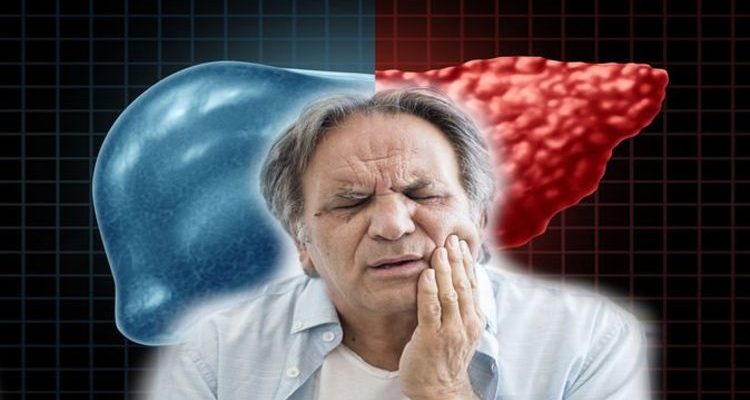Liver disease: NHS Doctor talks about link with alcohol
We use your sign-up to provide content in ways you’ve consented to and to improve our understanding of you. This may include adverts from us and 3rd parties based on our understanding. You can unsubscribe at any time. More info
Non-alcoholic fatty liver disease (NAFLD) is the term for a range of conditions caused by a build-up of fat in the liver. You can also get alcohol-related liver disease, which is liver damage that is caused by drinking too much alcohol. What are the mouth symptoms to spot?
Non-alcoholic fatty liver disease (NAFLD) is the term for a range of conditions caused by a build-up of fat in the liver.
NAFLD shares some risk factors with periodontitis – a severe gum infection that can lead to tooth loss and dental cavities, more commonly known as tooth decay.
Researchers interested in this link explored the possible association between NAFLD and several oral conditions among US adults.

Data was pooled from a cross-sectional, nationally representative National Health and Nutrition Examination Survey (NHANES) during the period of 1988 to 1994.
Researchers found people with any untreated tooth decay were more likely to have NAFLD.
NAFLD was also associated with tooth loss, periodontitis.
In another study published in the US National Library of Medicine National Institutes of Health, interaction between periodontitis and liver disease was investigated.
The study noted an increasing amount of evidence indicated that periodontitis may participate in the progression of liver diseases, such as non-alcoholic fatty liver disease, cirrhosis and hepatocellular carcinoma, as well as affecting liver transplantation.
The study concluded that the available evidence suggests that periodontitis may be a risk factor for development and progression of NAFLD.

Other potentially warning symptoms of NAFLD include:
- A dull or aching pain in the top right of the tummy (over the lower right side of the ribs)
- Extreme tiredness
- Unexplained weight loss
- Weakness.
Reducing your risk
Following a healthy lifestyle could help reduce the risk of developing the condition.
According to Cleveland Clinic, maintaining a healthy weight, exercising regularly, taking medication as prescribed and limiting alcohol intake could all help.
However, the good news is that once you develop NAFLD, you might still be able to reduce your liver fat and inflammation as the organ has “an amazing ability to repair itself”, the American health portal explains.
Source: Read Full Article
